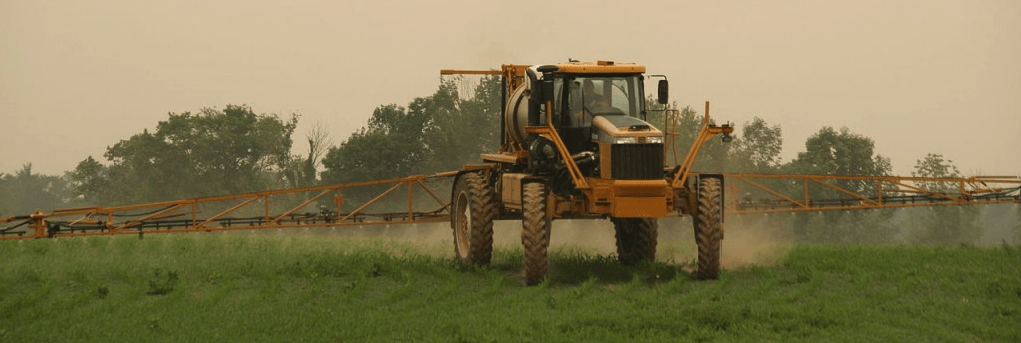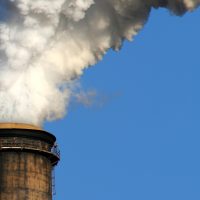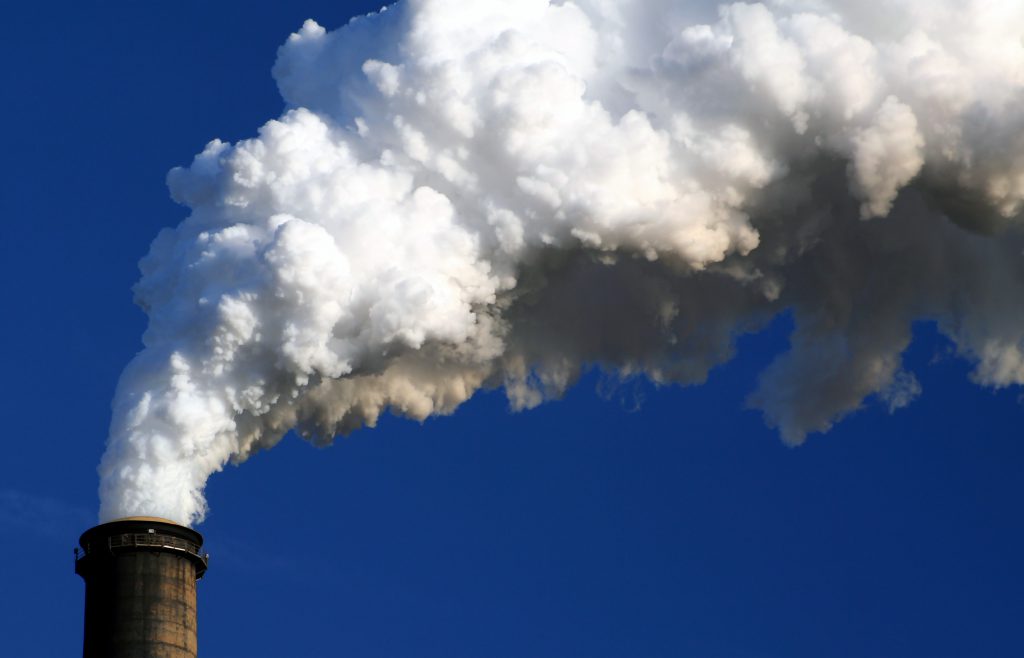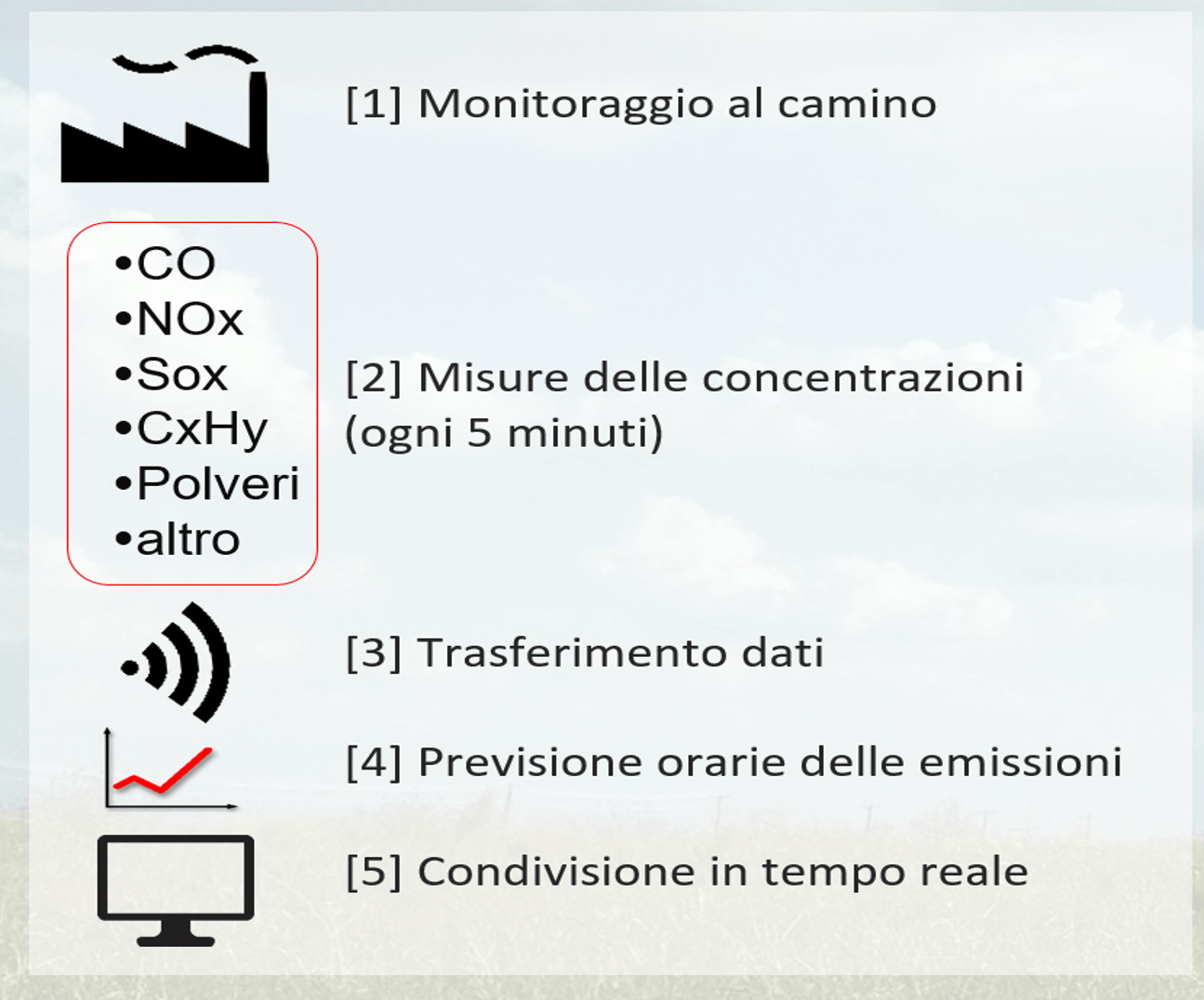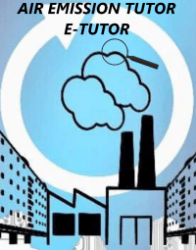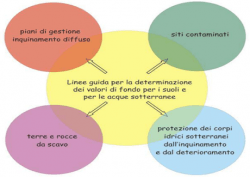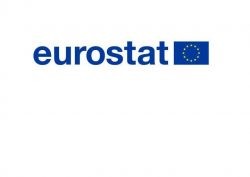Are the standards compatible?
Considering emissions by the maximum concentrations allowed by the Directive, we examined the possibility of generating an exceedance of the threshold concentration of contamination (CSC) in soils surrounding an incinerator: for the specific case, the compatibility of the two Directives has been tested.
The plant examined
In the industrial area, the incinerator has a chimney about 30 m height and releases the following parameters: total dust (TSP), hydrochloric acid (HCl), carbon monoxide (CO), nitrogen oxides (NO2), sulfur oxides (SO2), volatile organic compounds (TOC), mercury (Hg), cadmium and thallium (Cd + Tl), metals (Sb + Pb + Cr + Co + Cu + Mn + Ni + V + As), polychlorinated biphenyls (PCBs) , dioxins and furans (PCDD / PCDF), polycyclic aromatic hydrocarbons (PAHs), hydrofluoric acid (HF) and ammonia (NH3). All the output parameters were examined. For the normed parameters related to the soil quality (some heavy metals, PCBs, PCDD/PCDF and PHAs), additional simulations were performed for contaminants normed for defining the soil quality. The nearest weather station records of the last five years, for the parameters of air temperature (° C) average humidity (%), rainfall (mm), global radiation (kJ/m), wind direction (gr.nord ) and wind speed (m/s) were examined.
Dispersion model
The Multisource atmospheric dispersion model developed by Cirillo and Cagnetti (ENEA) has been used. Conditions of atmospheric dispersion and effects on the ground under different conditions were simulated: short and long term, different heights of the thermal inversion and building downwash (“building effect“) interference to get the definition of the area of maximum relapse, that is the area with the highest concentrations; this condition has been adopted independently of the actual use of the area and of the concentrations in the most conservative case to the environment, that is, the “worse” condition that must be considered with caution.
Results: air emissions and soil contamination
The fall on ground rate of contaminants was evaluated from the results of the examinations; the following simplifications, conservative for the environment, were assumed (“worse” conditions):
- all effluents entirely fall within the first 20 cm of the top-soil without dilution effects caused by moisture or other interference;
- for 100 years the chimney concentrations are persistent and equal to the maximum limit permitted (Legislative Decree 133/05), without considering that the chimney emissions are on average equal to 70% of the amount authorized, for some parameters even less, and without considering production stops and detentions plants for maintenance;
- maximum concentrations in the soil are persistent on a specific area and do not migrate with the weather thus generating other “dilutions”.
The fall on ground rate of contaminants was calculated, considering entirely incorporated in the first 20 cm of soil, with no change in the maximum relapse, without any interference with the effects of dilution, and without considering any suspension of issue; this flow has been multiplied by a period of 100 years to assess which parameters, among those included in Table 1A of Annex 5 Part IV of Legislative Decree no. 152/2006, could potentially exceed the reference limits.
The following concentrations to the soil, after 100 years of continuous and persistent emissions, have been shown by the results:
- heavy metals: the soil concentrations are below the law limits of 3 orders of magnitude;
- polychlorinated biphenyls: the soil concentrations are less than 50% of the law limit;
- dioxin and furan: the soil concentrations are lower than the law limits of 4 orders of magnitude;
- polycyclic aromatic hydrocarbons: the soil concentrations are below the law limits of 4 orders of magnitude.
In this specific case, the two Directives do not appear to be incompatible, the results are encouraging because they are based on the hypothesis “worse” than the real case; is not considered the presence of the continuous measurement systems of the effluents that have dedicated alarms in case of malfunctions and agricultural areas, although often compared to residential areas, do not actually have a clear legal status, as D.Lgs.152/2006 – Article 241 – refer to the adoption of a specific regulation, never showed and certainly complex: if the areas where current agricultural practices are carried out should respect the residential limits of Table 1A annex 5 Title V, Part IV of Legislative Decree no. 152/2006, you can evaluate that few acres of land in Italy would be “according to the law”.
CM
